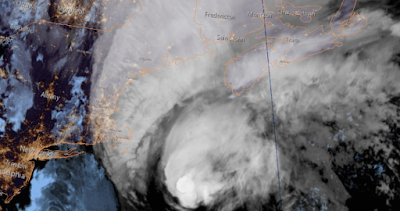 |
| A rare September snowstorm dumped over 90cm of thick wet snow on southwest Alberta over the weekend. (Photo via Twitter @rbgibbfarms and The Weather Network) |
Across the border in northwest Montana, even more snow fell, with an unbelievable 122cm (48 inches) at Browning, Montana. Brownings average annual snowfall is 151cm (59.5"), and we are not even out of September! The storm produced the usual mid-winter problems, with major travel delays and power outages reported. Numerous trees fell under the wight of the heavy snow.
 |
| Northern Montana measured even more snow than Alberta. (via Twitter @aaronjayjack) |
Warm weather in the east
While the snow was swirling across the west, warm and humid air surged into eastern North America. Dozens of records highs were set across the eastern US, with highs pushing into the middle 30s (90s) in many locations. Temperatures were quite warm in southern Ontario over the weekend, but slightly cooler here in southern Quebec. The weather in Montreal for the start of October will be quite unsettled. Showers and thunderstorms are likely Tuesday, along with mild high temperatures in the low 20s. By the end of the week, much cooler arrives on gusty northwest winds, with highs by Friday and Saturday only in the low teens.










